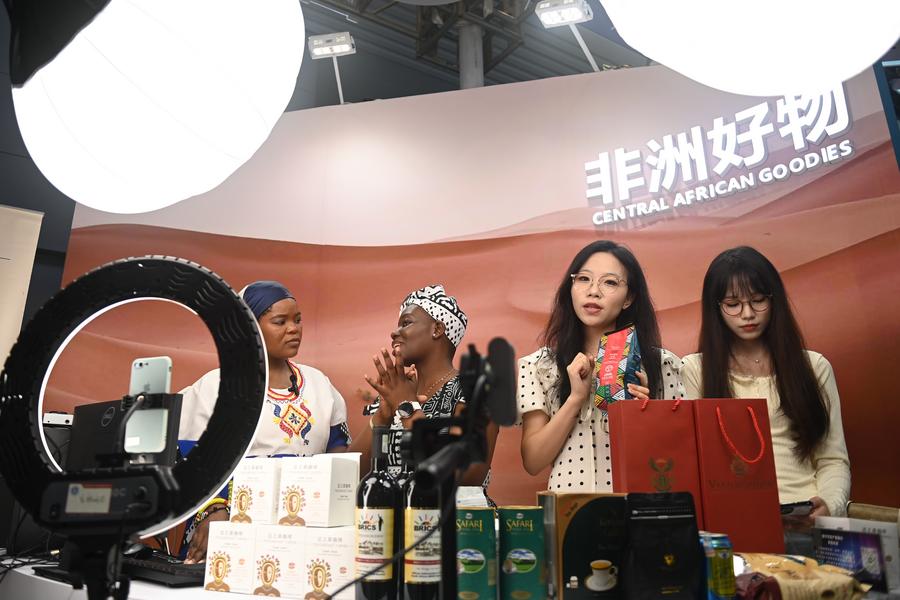World Trade Organization (WTO) Chief Economist Ralph Ossa (L) is interviewed in Geneva, Switzerland, on April 10, 2024. (Xinhua/Lian Yi)
China is an example of how trade-led development can transform a country, showing that developing countries worldwide can break free from poverty by leveraging international trade, said WTO Chief Economist Ralph Ossa.
The WTO report suggests using supportive domestic policies to help workers achieve employment opportunities, which is "a more effective approach than protectionism."
GENEVA, Sept. 28 (Xinhua) -- China offers "the prime example" of the success of the World Trade Organization (WTO) as a global trade driver, WTO Chief Economist Ralph Ossa told Xinhua in a recent interview.
Through a series of successful measures in economic growth and trade, the Chinese government has lifted hundreds of millions of people out of poverty, Ossa noted.
China is an example of how trade-led development can transform a country, showing that developing countries worldwide can break free from poverty by leveraging international trade, he said.
A foreign visitor poses for photos with a giant panda doll during the 2024 China International Fair for Trade in Services (CIFTIS) in the Cultural & Tourism Service thematic exhibition area at the Shougang Park in Beijing, capital of China, Sept. 16, 2024. (Xinhua/Li Xin)
In the 2024 edition of the World Trade Report released on Monday, the WTO presented strong evidence that trade has played a crucial role in narrowing income disparities and improving the inclusiveness of the global economy.
The report noted that between 1996 and 2021, a high trade share of GDP was strongly linked to faster growth in low- and middle-income economies, helping them narrow the gap in GDP per capita with high-income economies.
In its annual trade outlook report published in April this year, the WTO estimated that global trade volume in merchandise could increase by 2.6 percent in 2024 and 3.3 percent in 2025.
However, Ossa warned that global trade faces both cyclical and structural challenges. Cyclic challenges mainly refer to the impact of trade on the macroeconomic situation, with trade performance, particularly in Europe, being lower than expected; structural challenges stem largely from geopolitical tensions that create trade frictions.
In the face of the above challenges, strengthening the global supply chain is vital to international trade, Ossa said, adding that the trade facilitation measures taken by China, such as organizing the China International Import Expo and China International Supply Chain Expo are conducive to global trade.
Sales staff promote African products via livestreaming during the third Global Digital Trade Expo in Hangzhou, east China's Zhejiang Province, Sept. 25, 2024.(Xinhua/Huang Zongzhi)
Speaking of rising trade protectionism, Ossa said that "less trade will not promote inclusiveness ... true inclusiveness demands a comprehensive strategy, one that integrates open trade, on the one hand, with supportive domestic policies and effective international cooperation on the other hand."
He believes that tariffs are usually not the best tool to protect workers. The WTO report suggests using supportive domestic policies to help workers achieve employment opportunities, which is "a more effective approach than protectionism."
Efforts should be made in three aspects to ensure that more economies benefit from international trade: to strengthen the implementation of relevant WTO agreements, to update the WTO rulebook to adapt to future development trends, and to strengthen information sharing, said Ossa.
"By expanding trade integration to more economies, to more people, and towards more issues, I believe that we can make trade part of the solution to the most pressing challenges of our time," Ossa said.







 A single purchase
A single purchase









